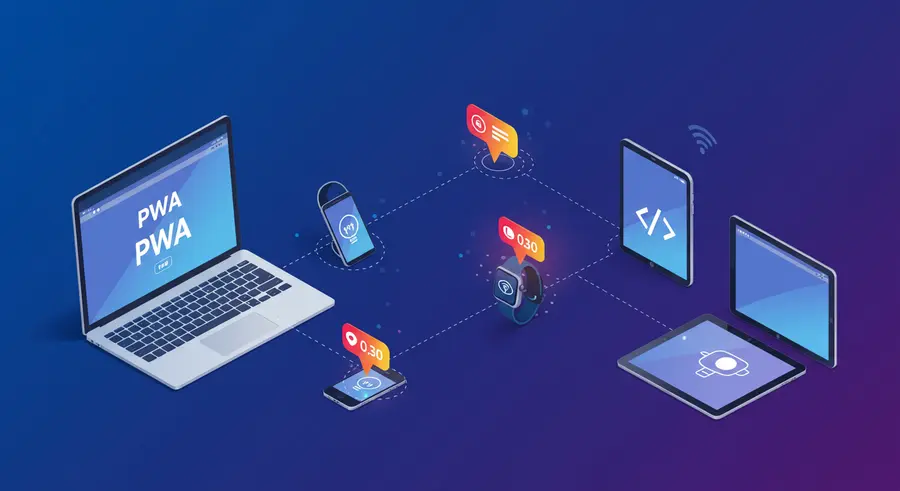Engaging Users with PWA Push Notifications

Push notifications are a powerful tool in the arsenal of Progressive Web Apps (PWAs), enabling applications to re-engage users with timely, relevant, and personalized information, even when they are not actively using the app. When implemented thoughtfully, they can significantly enhance user experience and drive retention.
Understanding the Magic: Service Workers and the Push API
The ability of PWAs to send push notifications stems from two core web technologies: Service Workers and the Push API. Service Workers are JavaScript scripts that run in the background, separate from the web page, and can intercept network requests, manage caching, and, crucially for this topic, receive push messages from a server. The Push API allows a web application to subscribe to push messages. When a server sends a message to the subscribed service worker, it can then display a notification to the user, even if the PWA isn't open in the browser.
This mechanism is designed with user privacy and control in mind. Applications must explicitly ask for permission to send notifications, and users can revoke this permission at any time through their browser settings.
Why PWA Push Notifications are a Game-Changer
The benefits of incorporating push notifications into your PWA are numerous:
- Boost User Re-engagement: Gently remind users about your app and its value. A well-timed notification can bring a user back to complete an abandoned task or explore new content.
- Deliver Timely Updates: Inform users about events that matter to them instantly. This could be breaking news, a message from another user, the status of an order, or a special offer.
- Enhance User Retention: By keeping users informed and engaged, push notifications can reduce churn and build loyalty.
- Provide Value Proactively: Offer helpful information or reminders before the user even thinks to open the app, such as a flight delay notification or a reminder for an upcoming appointment.
- Cross-Platform Reach: PWA push notifications work across different operating systems and devices that support modern web standards, providing a consistent way to reach users.
Best Practices for Effective Push Notifications
While powerful, push notifications can be intrusive if misused. Adhering to best practices is key to ensuring they are a welcome addition to the user experience:
- Ask for Permission Contextually: Don't request notification permission immediately on load. Explain the value of your notifications first, and ask when the user is most likely to understand and appreciate the benefit (e.g., after they've completed a key action).
- Provide Clear Value: Every notification should offer something useful or interesting to the user. If users don't perceive value, they'll quickly disable them.
- Don't Overwhelm (No Spamming!): The frequency of notifications should be carefully considered. Too many notifications, especially irrelevant ones, are the fastest way to get users to opt-out.
- Personalize and Segment: Generic notifications are less effective. Whenever possible, tailor messages based on user preferences, behavior, or location.
- Make Notifications Actionable: Include clear calls to action and deep link into the relevant part of your PWA. This makes it easy for users to respond to the information provided.
- Offer Granular Control: If possible, allow users to choose the types of notifications they want to receive. This gives them more control and makes them less likely to disable all notifications.
- Timing is Everything: Send notifications at appropriate times. Consider the user's time zone and daily routine. Avoid sending notifications late at night or during typical working hours unless they are truly urgent.
Real-World Use Cases
PWA push notifications are versatile and can be applied across various industries:
- E-commerce: Abandoned cart reminders, back-in-stock alerts, price drop notifications, shipping updates, exclusive deals for subscribers.
- News & Media: Breaking news alerts, notifications for new articles in topics of interest, live event updates.
- Social Media & Communication: New message notifications, mentions, friend requests, updates from followed accounts.
- Travel & Hospitality: Flight check-in reminders, gate changes, hotel booking confirmations, local recommendations.
- Productivity & Utility: Calendar event reminders, task deadlines, bill payment alerts.
By leveraging the capabilities of service workers and the Push API, developers can create PWAs that not only perform exceptionally well but also maintain a dynamic and engaging relationship with their users. Thoughtful implementation of push notifications is a key strategy in achieving this, transforming a PWA from a static site into a proactive and valuable user companion. For further reading on modern web development, exploring topics like advanced CSS techniques can also be beneficial.